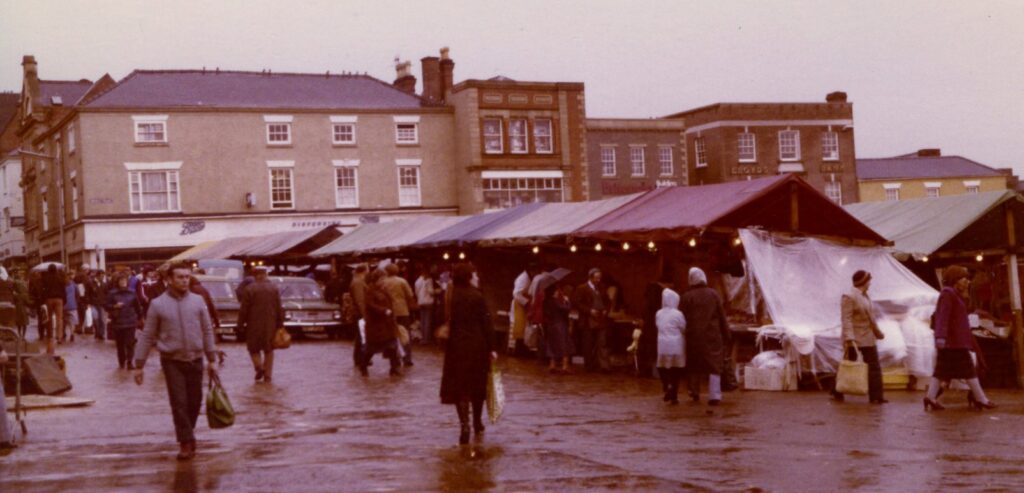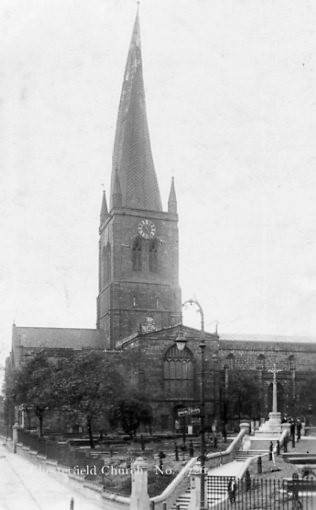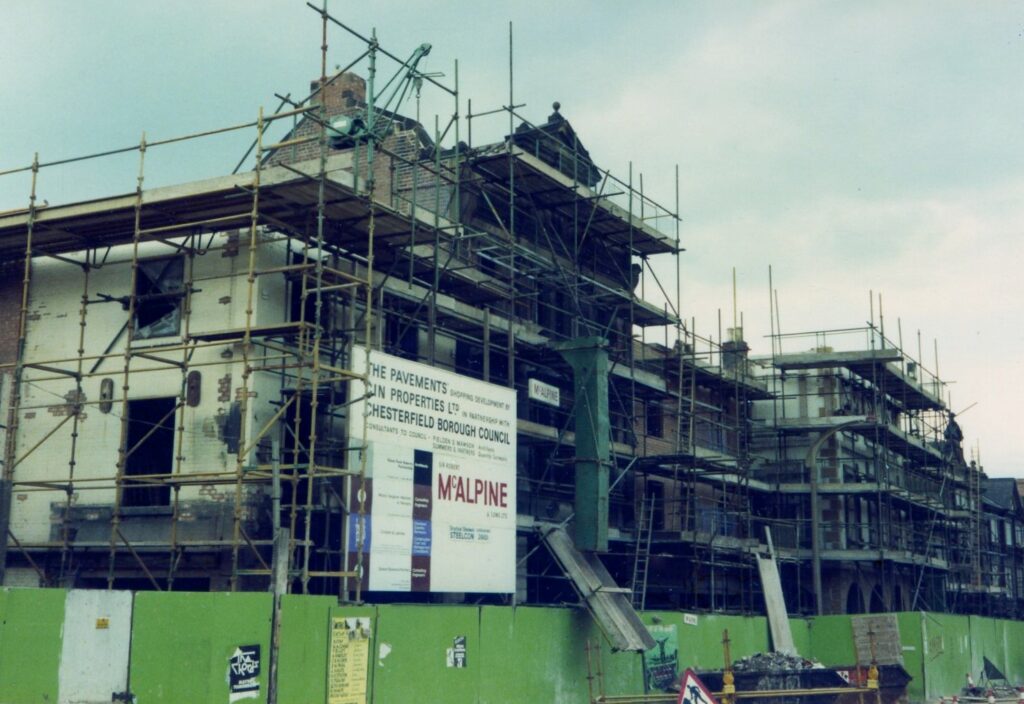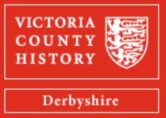In this post we take a very brief look at Chesterfield’s markets.

The first reference to a market in Chesterfield is in 1165 and the present market place (known throughout the Middle Ages as the New Market) had been built by 1199. This is before the burgesses (inhabitants of the borough with full rights of citizenship) were granted the right in 1204 to hold a Saturday market and an eight-day annual fair.

The old market place, was situated the north side of the parish church. This became known as the Weekday Market, presumably because a small number of traders stood there on days other than Saturdays. The chartered Saturday market was held in the present Market Place. The old market place had been built over the by the 15th century and may have gone out of use before then.
Construction of the New Market of the 1190s, by the Crown Officials who had charge of the Manor of Chesterfield, was undoubtedly a bold move. The existing market next to the parish church must have become constrained due to its position – being unable to be extended.

The New Market had three components: the open market place (basically the current market area), the lines of shops and houses along its northern and southern sides, and the block of shambles at its eastern end. The shambles were constructed for butchers, fishmongers and possibly other traders who would have stood in the market every day, not merely on Saturdays. The map extract from Potter’s 1803 plan of the town shows some of the layout of the market place area (note though, that not all properties are shown).
The Market Hall, originally built by a private company, dates from 1857. It replaced earlier buildings on the same site. These also provided covered accommodation for some traders and rooms for public meetings. The Market Hall was refurbished in the late 1970s, and again more recently.


An extract from Peter Potter’s 1803 map of Chesterfield. Not all properties are shown. Note the buildings on the site of the present Market Hall.
Although other fairs were established in Chesterfield after 1204, alongside the main September fair, no additional markets were chartered. The practice of holding markets on Friday and Monday, as well as Saturday, appears to date only from the early 20th century. The practice of erecting stalls other than in the Market Place is much more recent.
In 1900 the livestock market, which had been held in the Market Place, was transferred to a new purposely laid out ste off Markham Road.
One important lesson that can be reached from the market’s long history is that retailing (including markets) evolves continuously and must alter, as it has in the past, to meet changing consumer demand.
You can find out lots more about the growth of Chesterfield town centre and the history of the town’s markets in our ‘Chesterfield Streets and Houses book’.
The above is an edited extract from Chesterfield & District Civic Society’s response to the borough council’s Market Place consultation (http://www.chesterfieldcivicsociety.org.uk/2021/08/chesterfield-market-place-consultation/). It was written by our VCH County editor – Philip Riden – in his role as Chairman of the society.
